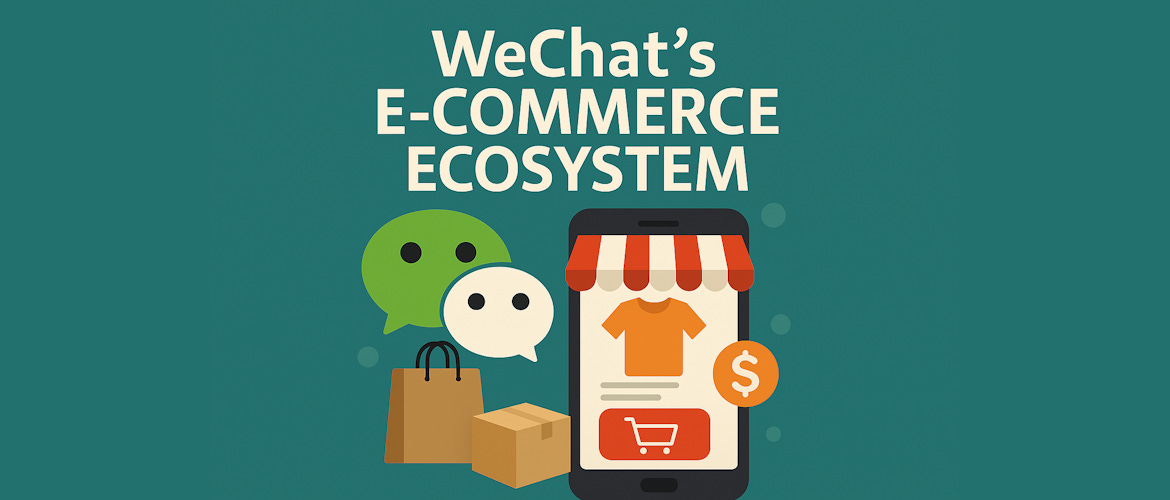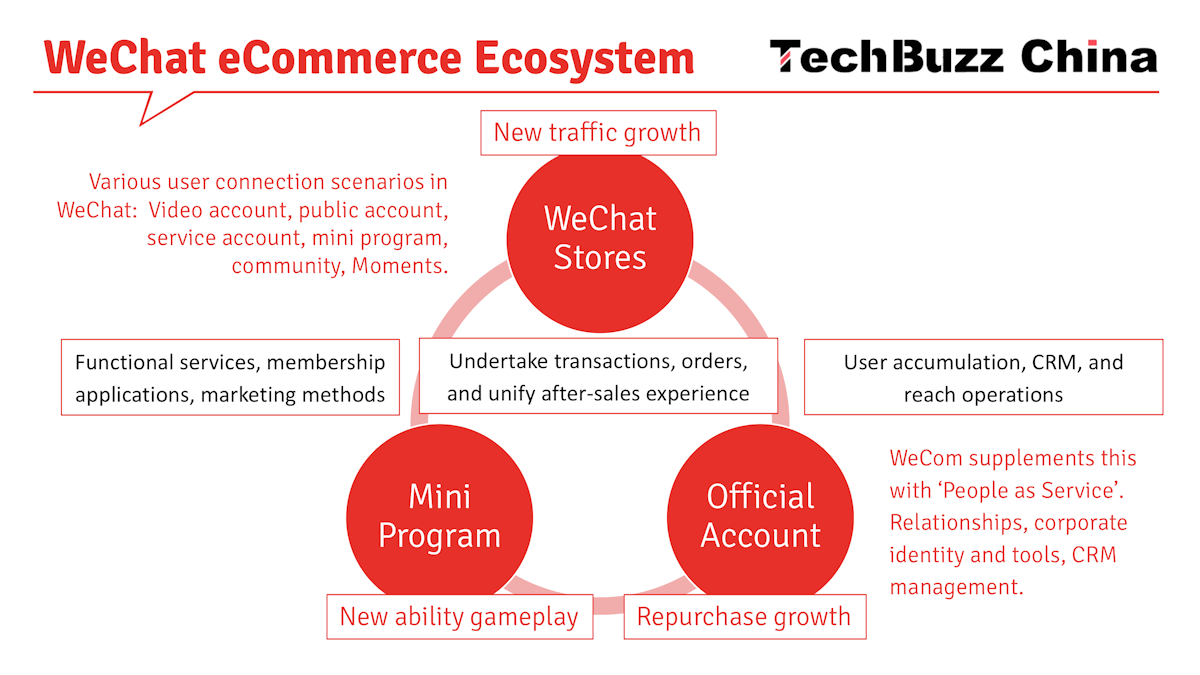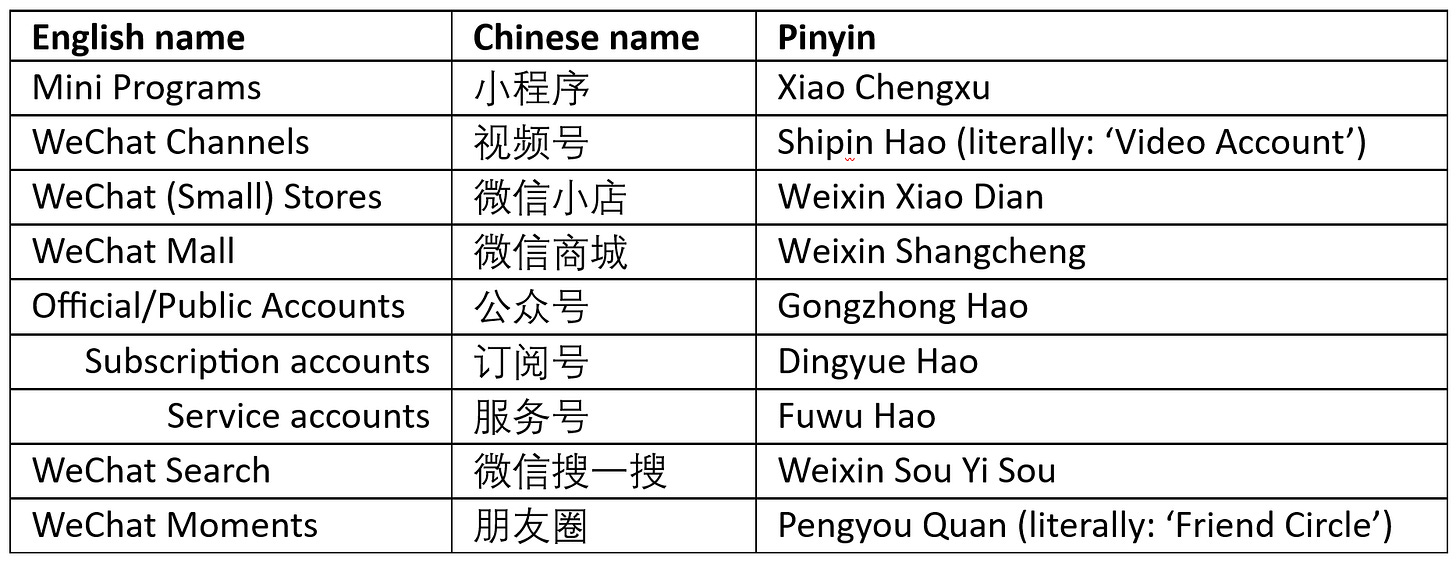Tencent’s e-Commerce Revival. Part 2: WeChat's e-commerce ecosystem
How Tecent is building true social commerce.
Contents
Things that caught our attention
These topics are mostly posts that Rui Ma and Ed Sander share on Twitter and our Substack Notes. Follow us there for shorter, worthwhile insights that won’t get their own deep-dive report.
Introduction
In June, we took a deep dive into WeChat’s new Send Gift function and shared its results so far and expectations for the future. The launch of this function is a sign of Tencent’s renewed interest in e-commerce.
Another indication that Tencent is reconsidering the role of e-commerce is that the topic was prominently featured in the annual WeChat Open Class held on January 9th. At the closed-door conference, plans for Send Gifts were discussed, as well as those for strengthening the link between various parts of its ecosystem: mini-programs, WeChat Stores and Service Accounts.
In this second part of our investigation into Tencent’s e-commerce revival, we take a closer look at the way WeChat’s ecosystem facilitates e-commerce.
The free section of the report below explains Tencent’s vision for WeChat e-commerce. Paid subscribers get full access to this report and will learn about the role the various components of that ecosystem play in growing e-commerce.
Become a paying subscriber to unlock the full report and support our in-depth research into key China tech trends.
Next week, in the third and final part of this series, we will explore the challenges WeChat has in making e-commerce successful and what the outlook for the future is.
Ed Sander, Tech Research Analyst
WeChat’s vision for e-commerce
WeChat has never been a key player in the e-commerce market and has even sold all of its e-commerce initiatives to JD.com at one point. Nevertheless, significant e-commerce and local services trade is facilitated in the WeChat ecosystem. In the WeChat ecosystem, mini-program payments account for a substantial share of the total e-commerce GMV. Currently, WeChat has about 80 million active e-commerce users, with annual mini-program e-commerce GMV approaching RMB 1 trillion.
Tencent is using WeChat's massive user base and social network advantages to develop its e-commerce business. By creating a social shopping environment, Tencent aims to attract consumers who are not interested in traditional e-commerce, thereby differentiating itself in a highly competitive market and increasing the platform's activity and user stickiness. This strategy aims to increase sales and customer loyalty while attracting more merchants to the platform and increasing the variety of goods.
Although Tencent predicts that competition in the e-commerce market will remain fierce, it believes that there is still great potential for development in the social networking area. To enhance its market competitiveness, Tencent is implementing a product innovation and differentiation strategy, of which the gift-giving function of WeChat Store is one example. This approach not only increases user activity but also enhances the platform's stickiness, laying a solid foundation for Tencent's development in the e-commerce field.
e-Commerce ecosystem
The operating model of WeChat e-commerce is significantly different from that of traditional e-commerce platforms. In WeChat’s ecosystem, e-commerce channels are rich and diverse, including public accounts, WeChat Channels, and music discovery feature Tingyiting, among which WeChat Channels is one of the largest traffic entrances.
WeChat e-commerce has adopted a unique decentralised strategy, integrating e-commerce functions as a component into the entire ecosystem, which is very different from the traditional Taobao platform. As a transaction service component, WeChat Stores does not have a central entrance like conventional e-commerce platforms, but primarily provides services through content, messages, and accounts. This model presents new opportunities and challenges for merchants and consumers, making e-commerce activities more flexible and diverse.
Zhang Xiaolong (Alan Zhang), president of the WeChat business group, has never been in favour of selling things through livestreams. He thinks it’s too monotonous and noisy. Still, he didn’t interfere when WeChat Channels started allowing live commerce. However, at a Tencent conference on November 11th 2024, he laid out his vision for e-commerce to his Tencent colleagues. He wanted product information to roam freely in WeChat, just like pictures do. Commodity transactions should not be limited to e-commerce for WeChat Channels; instead, they should be a transaction component of the entire WeChat system. They should be able to move freely in WeChat and be combined with other modules, such as red envelopes, payments, and mini-programs, to generate synergy. [1]
As anybody who uses WeChat knows, Tencent has created an impressive ecosystem inside the app. However, there has always been room for improvement in connecting the various elements of the ecosystem, and e-commerce seems to be a good reason to do that now.
According to the WeChat team's plan, WeChat stores, mini programs, and service accounts will form a "three-in-one" system in the WeChat e-commerce system. The idea is that WeChat stores will be where transactions and after-sales services occur. Mini-programs will be used for functional services, while memberships and marketing and service accounts (a type of public account) should drive retention and repurchase. [2] In other words, mini-programs will serve as brand websites where people can learn about brands. WeChat Stores are where they make purchases, and they will become fans by following Service Accounts. By integrating the ecosystem of WeChat stores, mini-programs and WeChat Channels, Tencent hopes to drive a new round of growth for the overall business.
Translated slide presented during the WeChat Open Class held on January 9th, 2025. Source: 36Kr
WeChat has traditionally been cautious in e-commerce, employing strict review standards, high deposits, and restricting many product categories. However, in the Open Class in January, it was announced that WeChat would open all categories, lower commissions, and no longer request deposits. It seems like Tencent is serious about giving e-commerce another try.
The WeChat e-commerce ecosystem consists of these main components:
Below, we will dissect the several key parts of the WeChat e-commerce ecosystem and how they interact.





